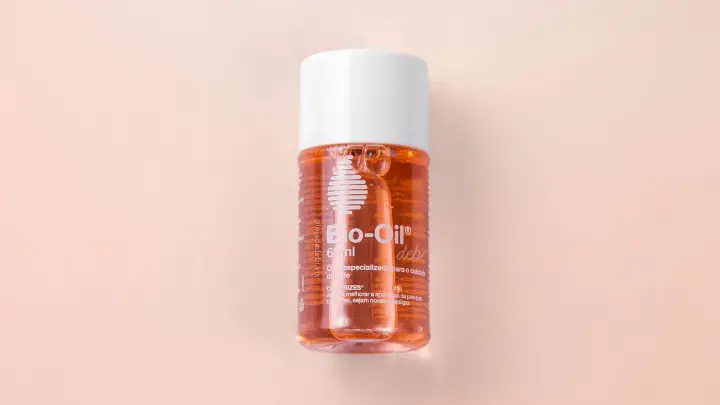Yes, you can. The combination of niacinamide and salicylic acid works extremely well – and can do wonders for your skin.
If you’re a skincare enthusiast, you probably know about niacinamide and salicylic acid. People have used them for years to help treat a variety of skin concerns from acne to wrinkles and everything in between.
Touted as the “holy grail” by some, the popularity of niacinamide and salicylic acid seems to be on the rise. Many people are now using the two ingredients together in their skincare routines to achieve clear, healthy-looking skin.
But should they be used together? What exactly are niacinamide and salicylic acid? This article discusses everything you need to know about these popular skincare ingredients.
What Does Niacinamide Do?
Niacinamide, also known as nicotinamide, is a form of vitamin B3 present in food sources such as green vegetables, fish, meat, and eggs. However, it is water-soluble and can be easily flushed out of the body, so it needs to be replenished regularly.
Manufacturers often include this ingredient in many skincare products because it has several properties that provide skin with a brighter tone and help reduce wrinkles and other signs of aging.
Niacinamide can also help even skin tone while also providing the skin with a boost of hydration. Many people see an improvement in their skin after using niacinamide for several weeks, but it can take up to three months before you see the full effects.
What Does Salicylic Acid Do?
Salicylic acid is a type of beta-hydroxy acid. It is derived from willow tree bark and has many beneficial properties. The effectiveness of salicylic acid is well known. It can help treat acne, skin discolorations, and even psoriasis.
Salicylic acid works by removing dead cells on the upper layers of the skin, where oil accumulates and bacteria breed. This process allows new cells to come to the surface quickly and prevents clogged pores from becoming inflamed.
Because of its keratolytic effect (causing the outer layer of dead skin to shed), you can find it in many acne medications. It is also available in skincare products such as creams and serums to help deliver the active ingredient directly to your problem areas.
Can You Use Niacinamide With Salicylic Acid?
The simple answer to this question is yes. Niacinamide and salicylic acid are both exfoliants that can help clear your pores, so you don’t necessarily need to stop using one to start using the other.
Salicylic acid can help treat skin conditions like acne and psoriasis by removing dead cells from the surface of the skin. Niacinamide helps keep pores clear of buildup, so when combined, it has a similar effect in treating skin conditions as salicylic acid.
You want to apply the niacinamide first and allow your skin to absorb it before you add the salicylic acid. Niacinamide reduces the skin’s sensitivity to salicylic acid, so you can use a stronger concentration of it than you normally would.
Can You Use Niacinamide With Salicylic Acid to Treat Acne?
These two ingredients are both beneficial for treating acne, but they work differently. Niacinamide is more effective in preventing acne rather than treating it. Salicylic acid has the opposite effect. It is more effective in treating acne than preventing it.
Niacinamide can help prevent acne because it helps control the activity of certain enzymes on the skin. It also has anti-inflammatory effects that can help calm the redness that occurs during an inflammatory response.
Salicylic acid, on the other hand, helps treat acne by opening up blocked pores and removing dead skin cells that clog pores. This reduces inflammation and irritation caused by acne.
You can use these two together because they will complement each other’s effects in preventing and treating acne. Niacinamide will work on preventing future breakouts while salicylic acid fights against the growth of existing pimples.
Benefits of Using Niacinamide With Salicylic Acid
Reduced sebum production
Sebum is the natural oil produced by your skin to keep it moisturized. It also has an antibacterial effect that prevents infections caused by bacteria. But sometimes, sebum production goes overboard, causing the appearance of acne.
Niacinamide when combined with salicylic acid can reduce the amount of sebum produced by up to 50%, which makes your skin less oily and less likely to produce pimples.
Reduced appearance of acne
Salicylic acid is an exfoliant that helps get rid of acne blemishes, blackheads, and whiteheads. Niacinamide is an anti-inflammatory ingredient that calms the skin and reduces redness.
Together, they can help to prevent breakouts, soothe existing acne and make your complexion look smoother and clearer.
Reduced signs of aging
Another benefit of using this combination is that it can help reduce wrinkles and other aging signs on your face. It helps keep your collagen levels high, by increasing its production in your body (collagen is a protein that makes your skin more elastic).
Improved skin tone
Niacinamide is a powerful ingredient that can help to brighten and rejuvenate your skin by reducing melanin production in the skin. As an exfoliant, salicylic acid helps to dissolve the buildup of dead skin cells and dirt that causes dull skin.
Sun protection
Salicylic acid has anti-inflammatory properties that can reduce redness and swelling caused by stinging or burning. Niacinamide can also help protect against some of the harmful effects of prolonged exposure to UV rays from sunlight.
How to Use Niacinamide With Salicylic Acid
There are several ways you can add this powerful duo to your routine. First of all, you can apply a product that contains the two, allow it to absorb, and then apply moisturizer.
Another option is to layer one ingredient after the other, allowing each one to absorb completely into your skin. You may want to experiment with different types of products if you’re not sure which one will work best for you.
If one product is a serum and another is a moisturizer, that’s fine. You can even use a niacinamide cleanser and a salicylic acid toner in the morning, then continue with a salicylic acid cleanser and a niacinamide serum at night.
You can also alternate the days you’ll use one product and another to avoid any potential irritation or burning sensation if you have sensitive skin.
For best results, choose the method that works best with your skin type.
How to Layer Niacinamide With Salicylic Acid
- Cleanse your face thoroughly with a gentle cleanser to remove all dirt and impurities. This will also help your products penetrate your skin more effectively and reduce irritation.
- Pat dry and then apply toner with a cotton pad or your fingertips. This will remove any leftover cleanser residue and prep your skin for the next step in your routine.
- Apply 2-3 drops of your niacinamide serum to your face, then massage it into your skin using your fingers. Make sure to apply the product carefully (you don’t want any irritations).
- Wait 10 minutes for the product to absorb into your skin before applying salicylic acid over it.
- Follow up with your moisturizer, sunscreen, and makeup (if needed).
Avoid using retinol or glycolic acid on your skin while using this combination because they may cause your skin to burn and peel.
Potential Risks and Side Effects
As with all skincare products, there are some possible side effects that you should know about before using niacinamide with salicylic acid.
The most common side effect is drying and irritation of the skin. You can reduce this by using this combination less frequently or by using one ingredient in the morning and another at night.
If these effects are too severe or if they do not go away after a few days, it’s important to stop using the products and contact your doctor immediately.
FAQs
When is the best time to use niacinamide with salicylic acid?
The best time to use these two ingredients together is in the morning and at night, just after cleansing and toning, but before applying other skincare products.
If you have sensitive skin, it’s best to use the duo only at night. Wait at least two days between each application, as using it more frequently can irritate your skin.
Which goes first, niacinamide or salicylic acid?
Niacinamide. You should apply niacinamide before salicylic acid because it is a water-soluble ingredient and will absorb into your skin better if applied first.
Salicylic acid is oil soluble and needs to be applied after water-soluble ingredients because it will dissolve in the oil on your skin. If you apply salicylic acid first and then niacinamide, they will not work as effectively.
Can you use niacinamide with salicylic acid to treat acne?
Yes, you can. The two ingredients work together to fight acne. Niacinamide reduces inflammation and redness, while salicylic acid exfoliates dead skin cells to prevent pores from clogging.
Using both ingredients at the same time also creates a powerful anti-bacterial effect that’s perfect for fighting breakouts. Both ingredients are effective at clearing up acne over time, so you should start to see results after a few weeks.
Conclusion
As long as you don’t overdo it, both niacinamide and salicylic acid can benefit your skin. This combination of ingredients will help fight acne, aging signs, and improve overall skin conditions.
However, if you have sensitive skin, it’s recommended that you alternate the application of salicylic acid with niacinamide. For example, apply one product the night before and then wait until the next day to apply the other product.
Both ingredients do their jobs effectively, and they help improve your overall skin tone and texture.
Thanks for reading.
Visit Serum101 for more articles on niacinamide and how you can combine it with other skincare ingredients.






